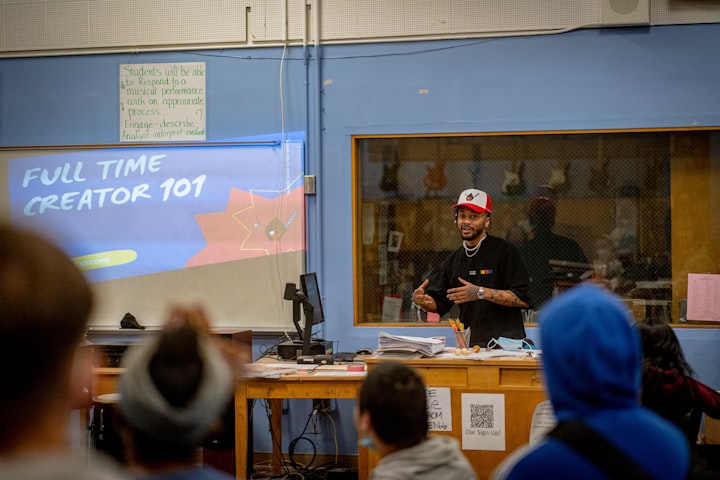Why We Should Start Teaching Advanced Tech Skills Early in Education
Why We Should Start Teaching Advanced Tech Skills Early in Education
Many people reading this article will be able to remember with keen clarity their cursive units in second or third grade. Even then, in your young age, you probably studied the loopy designs with skepticism. How often is this going to come up in real life?
Not often.
In an age of tablets and cloud-based technology, aren’t there better skills we could be teaching our primary school students? Being able to understand digital technology isn’t just good for helping them succeed later on in school. It’s also a vital skill for job readiness later on.
In this article, we lay out reasons why we should start teaching advanced tech skills early on in education.
Tech Skills Provide Students with more Options
An increasingly large number of the highest-paying jobs are in technology. While it is possible to pick up the skills necessary for these positions in college, most people entering a computer science program go in with a decent amount of background knowledge.
Kids who can barely sign into their Gmail account probably won’t be considering it as an option. Planting the seeds for interest in technology in the earliest years of education can help them develop skills that they can then build upon as they get older.
Keep in mind that qualifying for tech-related jobs is often less about credentials than it is about what you can do. Some highly successful people working in tech didn’t go to college at all— they landed their gig simply by being the best this or that on the block.
The Job Landscape is Changing
Is it really though? To find out, we turned to ChatGPT for an answer. Here's what old Chatty G said:
“Yes, the job landscape is evolving rapidly due to technological advancements, automation, remote work, and shifting industry demands, creating new opportunities and challenges for workers and businesses. To thrive, individuals should focus on developing adaptable skills, embracing lifelong learning, and staying abreast of emerging trends to remain competitive in this dynamic environment.”
Kids who can’t stay abreast of the most recent technological developments are going to find that the job they were interested in might not exist in the same state that it did when they began their education.
In a world where jobs are becoming increasingly automated, it’s important to be able to adapt. A keen understanding of tech will allow kids to pivot and upgrade their skills in a way that keeps them not only employable but highly successful.
But Wait
None of this is to say that digital technology in classrooms is strictly a positive change. It does have benefits, sure, but it also has consequences. Let’s take a look:
Cyberbullying
Some experts have suggested that cyberbullying is one of the hardest forms of school-related abuse for children to cope with. For one thing, it takes place in a public forum where anyone can see it, increasing the scope of their embarrassment. It’s also able to reach them in places that used to be safe. If someone is stealing your lunch money, you can at least try to forget about them when you get home. Not so with cyberbullying.
Diminished Learning Potential
This one comes with a bit of an asterisk. More on that in a second. Here’s the rub— people usually learn better on paper than they do on screens. There are a variety of reasons why experts think that may be, but the bottom line is that many studies have indicated that the human mind places a lower priority on information that comes from a screen than it does on information that comes from paper. Here’s the asterisk: Screen-based learning is still a relatively young concept. Even 10-15 years ago, many students were still lugging around backpacks filled with heavy books. Those kids with hunched backs never had the opportunity to learn regularly from a screen, so the experiences from which to draw data are limited and flawed.
It remains to be seen how someone who has been using tablets and Chromebooks since first grade will handle long-term screen-based learning. Will they adjust, and learn just as well as they would have from paper? Paper-based learning still wins out in most studies but time will tell if that remains the case as screens continue to reign supreme.
There is also just an accessibility problem. Teaching tech in schools should have the effect of making tech-related careers more accessible to people from every background. Diversity is something that the tech industry really needs, so that’s a good thing, right?
Well. Yes and no. Yes— teaching everyone tech skills will open more doors. No, that can’t be the beginning and end of the effort.
Not every kid is able to work with digital technology at home. They may not have the hardware. They may not even have an internet connection. The disparity between people who have access to digital technology and those who do not is known as the “digital divide,” and it tends to negatively impact the most vulnerable portions of the population.
If schools are going to migrate toward an increasingly tech-based style of learning, they must make sure that no one is slipping through the cracks due to a lack of means.
Some schools are already fighting back against the divide by providing their students with wireless hotspots, and other ways to access digital tech outside of classroom hours. That is a good starting point. However, summers and other periods of school without access to digital technology will still ultimately disadvantage kids on the wrong side of the digital divide.
Teaching kids digital technology is great. However, total inclusivity is required to make the transition into a more digitized landscape graceful and fair.







Comments (1)
First and foremost, nice read. Spending a portion of my career as an Educational Consultant and International School Director, technology in the classroom remains one of the keys for future growth of our youth. One aspect of technology in the classroom started with STEM, which transitioned into STEAM and now STREAM. This is another topic for another day, but an example of how technology continues to advance in our classrooms in the 21st century. You may also enjoy the following: https://vocal.media/feast/how-the-vote-against-food-as-a-human-right-changed-my-life Thanks for sharing.